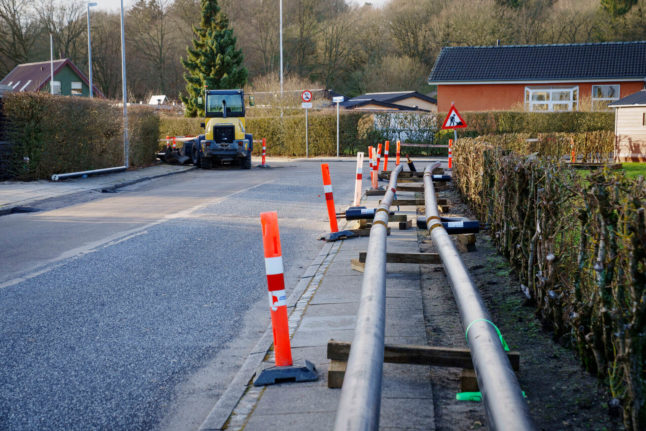Some 40,000 homeowners in Denmark were lasted year added to district heating networks, and 58,000 the year before.
Around 1.9 million homes in Denmark now have district heating, according to the latest figures from industry organisation Dansk Fjernvarme provided to news wire Ritzau.
During the energy crisis of 2022, the government announced a drive to move as many homes as possible from freestanding boilers to district heating systems, which are more likely to be fuelled by sustainable energy sources.
Around 50 percent of Danish households that were heated by natural gas in 2022 will be converted to district heating by 2028, according to the target announced by the government two years ago.
At the time, around 400,000 households in Denmark were heated using natural gas energy supplies.
Up to 30-50 percent of those homes were suitable for conversion to district heating and will be gradually switched over in a process that will last until 2028.
What is district heating and why is it preferred to gas boilers?
District heating, fjernvarme in Danish, is when heated water generated at a central location such as a power plant is pumped via insulated pipes to houses or apartments, where it provides heating.
The energy used to heat the water can come from a variety of sources, depending on the location of the local power plant and the company which operates it.
Energy sources in Denmark include burning of biomass (like wood, straw and biodegradable household waste) and non-biodegradable household waste – these represent almost 75 percent of the fuel for district heating plants. Natural gas, biogas, coal, oil and solar power used in some areas.
READ ALSO: How to reduce your Danish heating bill in the summer
Wind power is used to produce electricity, with heat from this process also going into district heating water.
Power plants that use sustainable sources will sometimes switch to non-sustainable energy to produce heat if there is a lack of sustainable energy, for example due to weather conditions.
District heating using sustainable sources is preferred by the government because it makes Denmark less dependent on imported energy like gas.
It is also generally a cheaper source of heat and can protect individual homes from fluctuations in energy prices.
How does it work?
The basic explanation is heated water from the district heating system’s power plant is distributed to homes via insulated pipes in the ground.
Once it has reached houses, the hot water provides heating through radiators or underfloor heating and as hot water in taps and showers.
Once the water has emitted its heat, it is sent back to the power plant where it can be heated up again.
There are two types of district heating setups within buildings: direct and indirect.
With direct district heating, the hot water from the insulated pipes goes straight into the house’s piping and radiators and is pumped by a local heating utility or a circulation pump. Around 60 percent of Denmark’s district heating – including in Aalborg, Odense, Esbjerg and Aarhus – works this way according to real estate specialist Bolius.
Indirect district heating uses the hot water from the power plant to heat water in a tank inside the house, a so-called varmeveksler or water exchange. This water is then pumped around the house. This means the water from the district heating plant is always in a closes system. Cities in Denmark which use this version include Copenhagen, Frederiksberg, Randers, Roskilde and Vejle.



 Please whitelist us to continue reading.
Please whitelist us to continue reading.
Member comments